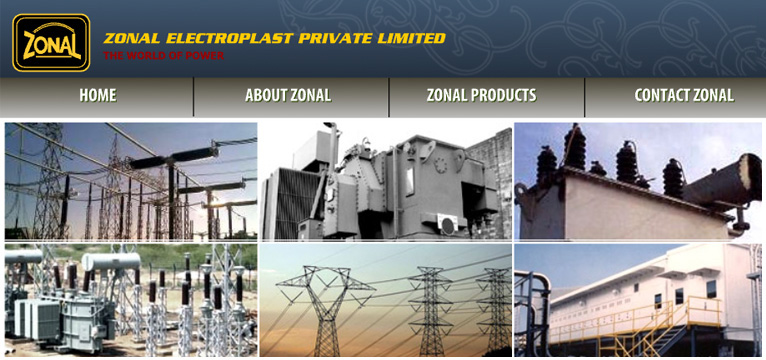Principle of operation
The standards define a voltage transformer as one in which "the secondary voltage is substantially proportional to the primary voltage and differs in phase from it by an angle which is approximately zero for an appropriate direction of the connections."
This, in essence, means that the voltage transformer has to be as close as possible to the "ideal" transformer. In an "ideal" transformer, the secondary voltage vector is exactly opposite and equal to the primary voltage vector, when multiplied by the turns ratio.
In a "practical" transformer, errors are introduced because some current is drawn for the magnetization of the core and because of drops in the primary and secondary windings due to leakage reactance and winding resistance. One can thus talk of a voltage error,which is the amount by which the voltage is less than the applied primary voltage ,and the phase error, which is the phase angle by which the reversed secondary voltage vector is displaced from the primary voltage vector.
Zonal designs its VT's so that the resistance and reactance drops are minimized. It also uses the best grades of cold rolled grain oriented electrical steels which enables operation at optimum levels of magnetic induction, thus reducing both the size and the cost of the VT.
Definitions
Typical terms used for specifying a voltage transformer (VT)
- Rated primary voltage: This is the rated voltage of the system whose voltage is required to be stepped down for measurement and protective purposes.
- Rated secondary voltage: This is the voltage at which the meters and protective devices connected to the secondary circuit of the voltage transformer operate.
- Rated burden: This is the load in terms of volt-amperes (VA) posed by the devices in the secondary circuit on the VT. This includes the burden imposed by the connecting leads. The VT is required to be accurate at both the rated burden and 25% of the rated burden.
- Accuracy class required: The transformation errors that are permissible, including voltage (ratio) error and phase angle error. Phase error is specified in minutes. Typical accuracy classes are Class 0.5, Class 1 and Class 3. Both metering and protection classes of accuracy are specified. In a metering VT, the VT is required to be within the specified errors from 80% to 120% of the rated voltage. In a protection VT, the VT is required to be accurate from 5% upto the rated voltage factor times the rated voltage.
- Rated voltage factor: Depending on the system in which the VT is to be used, the rated voltage factors to be specified are different. The table below is adopted from Indian and International standards.
Rated voltage factor |
Rated time |
Method of connecting primary
winding in system |
1.2 |
Continuous |
Between phases in any network
Between transformer star-point and earth in any network |
1.2
1.5 |
Continuous
for 30 seconds |
Between phase and earth in an effectively earthed neutral system |
1.2
1.9 |
Continuous
for 30 seconds |
Between phase and earth in a non-effectively earthed neutral system with automatic fault tripping |
1.2
1.9 |
Continuous
for 8 hours |
Between phase and earth in an isolated neutral system
without automatic fault tripping or in a resonant earthed
system without automatic fault tripping |
- Temperature class of insulation: The permissible temperature rise over the specified ambient temperature. Typically, classes E, B and F.
- Residual voltage transformer (RVT): RVTs are used for residual earth fault protection and for discharging capacitor banks. The secondary residual voltage winding is connected in open delta. Under normal conditions of operation, there is no voltage output across the residual voltage winding. When there is an earth fault, a voltage is developed across the open delta winding which activates the relay. When using a three phase RVT, the primary neutral should be earthed, as otherwise third harmonic voltages will appear across the residual winding. 3 phase RVTs typically have 5 limb construction.
- Metering Units:11kV metering units consist of one 3 phase VT and 2 CT's connected together in a single housing. This can be used for three phase monitoring of energy parameters. It is used with trivector meters and energy meters.
Standards
The Indian and international standard references for VT s are as given in the table below:
Standard |
Standard Number |
Year |
Indian |
IS 3156 |
1992 |
British |
BS 3841 |
1973 |
British |
BS 7625 |
1993 |
British |
BS 7729 |
1994 |
International
Electro technical
Commission (IEC) |
IEC 186 |
1987 |
Australian |
AS 1243 |
1982 |
American |
ANSI C.57.13 |
1978 |
Zonal manufactures VT s to all these standards. Our designs are backed up by extensive type testing at national and international laboratories.
Tests
A number of routine and type tests have to be conducted on VT s before they can meet the standards specified above. The tests can be classified as:
- Accuracy tests to determine whether the errors of the VT are within specified limits
- Dielectric insulation tests such as power frequency withstand voltage test on primary and secondary windings for one minute, induced over-voltage test , impuse tests with 1.2u/50u wave, and partial discharge tests (for voltage>=6.6 kV) to determine whether the discharge is below the specified limits.
- Temperature rise tests
- Short circuit tests
- Verification of terminal markings and polarity
Zonal conducts routine tests on each and every VT produced and all designs are type tested.
Typical specification for a 11 kV VT
System voltage: 11 kV
Insulation level voltage (ILV) : 12 /28/75 kV
Number of phases: Three
Vector Group: Star / Star
Ratio: 11 kV/ 110 V
Burden: 100 VA
Accuracy: Class 0.5
Voltage Factor: 1.2 continuous and 1.5 for 30 seconds
With provision for fuse
Double and triple secondary VT s are also manufactured. |

